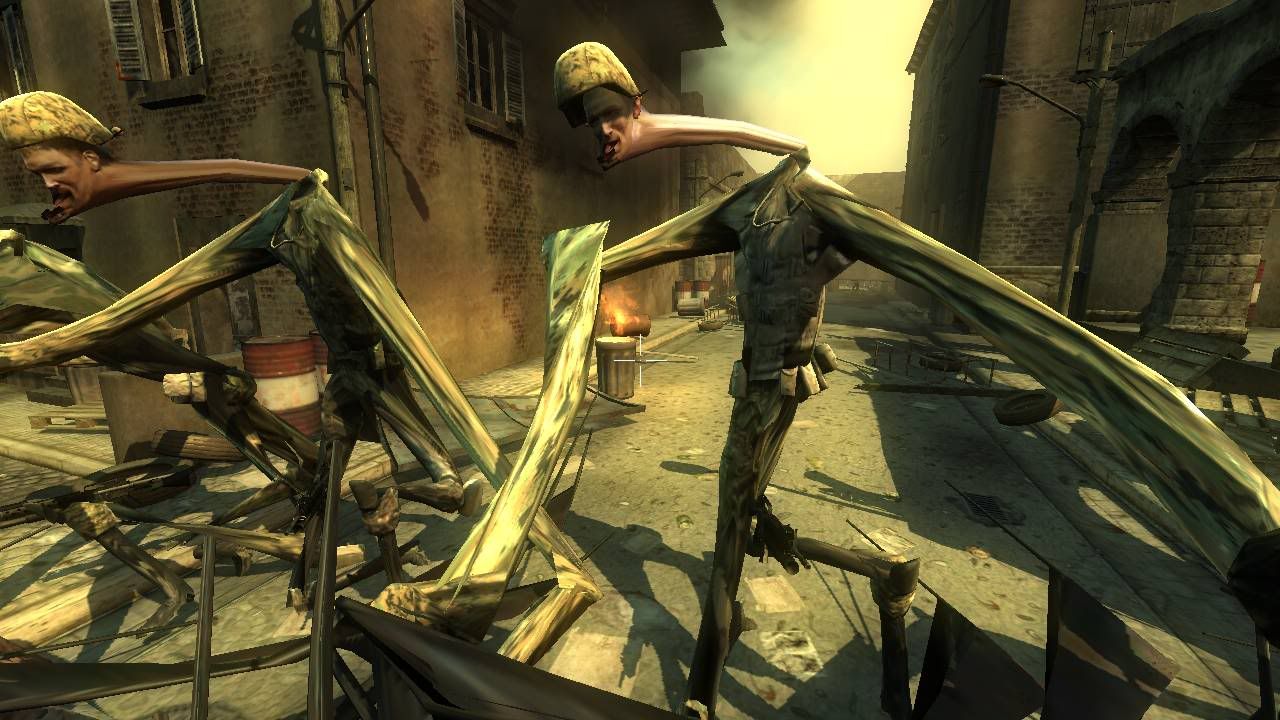Taking a chance on this thread, which'll only get anywhere if devs want to weigh in, but I want to discuss some of the oddest bugs people have experienced in games and try to understand what causes them.
eg. The recent screenshot that showed the refection of the gun barrel on the side of the gun, explained as an alternative projection when rendering the gun before applying screen-space reflections type thing.
I'll start with my impetus - Borderlands 2's random object replacement. On some rare occasions playing online, the local environment either has blacked out objects with no details, or, most curiously, objects completely missing or replaced. I have seen the vending machines in Sanctuary missing while my friends were shopping at them. We also had a vending machine in one level for a friend where myself and another saw only a skag pile.
Given the scenery are static levels defined on the local machine, how can the objects get replaced with different ones or not loaded at all? I can't understand what's going on under the hood to account for this, hence my curiosity and question.
I don't know if anyone else has experienced a completely weird bug that's worth asking about. I'm not talking the typical collision error or boundary violation of general graphical glitch, but one that seems a real headscratcher and who's explanation will help better understand how modern games work.
eg. The recent screenshot that showed the refection of the gun barrel on the side of the gun, explained as an alternative projection when rendering the gun before applying screen-space reflections type thing.
I'll start with my impetus - Borderlands 2's random object replacement. On some rare occasions playing online, the local environment either has blacked out objects with no details, or, most curiously, objects completely missing or replaced. I have seen the vending machines in Sanctuary missing while my friends were shopping at them. We also had a vending machine in one level for a friend where myself and another saw only a skag pile.
Given the scenery are static levels defined on the local machine, how can the objects get replaced with different ones or not loaded at all? I can't understand what's going on under the hood to account for this, hence my curiosity and question.
I don't know if anyone else has experienced a completely weird bug that's worth asking about. I'm not talking the typical collision error or boundary violation of general graphical glitch, but one that seems a real headscratcher and who's explanation will help better understand how modern games work.




